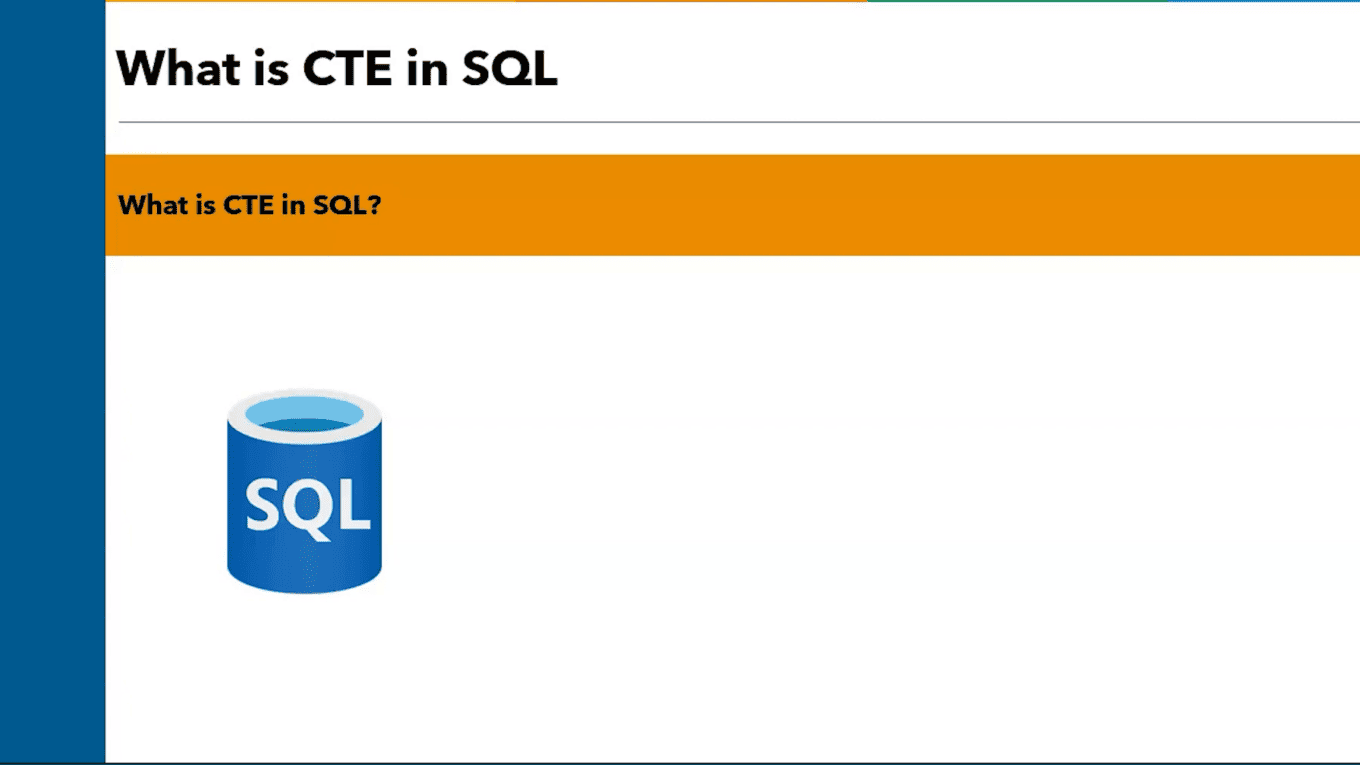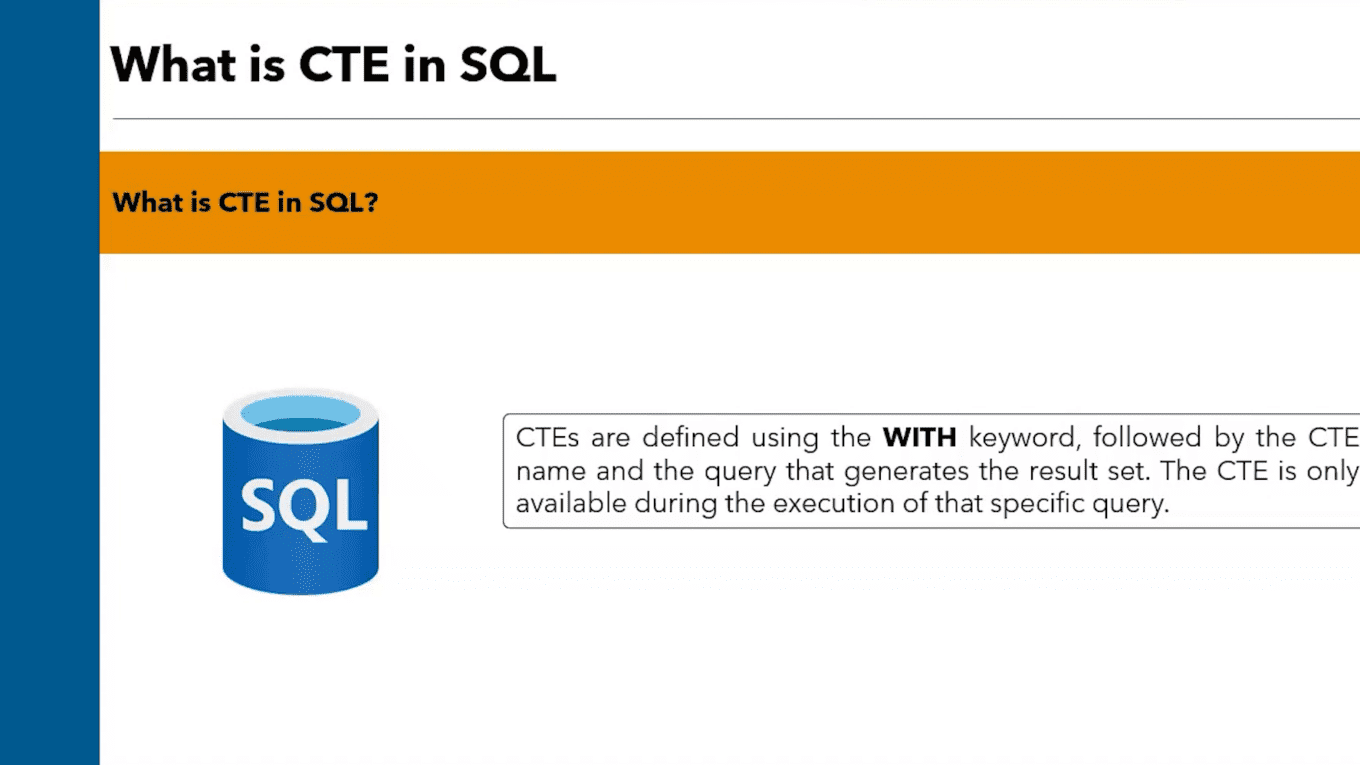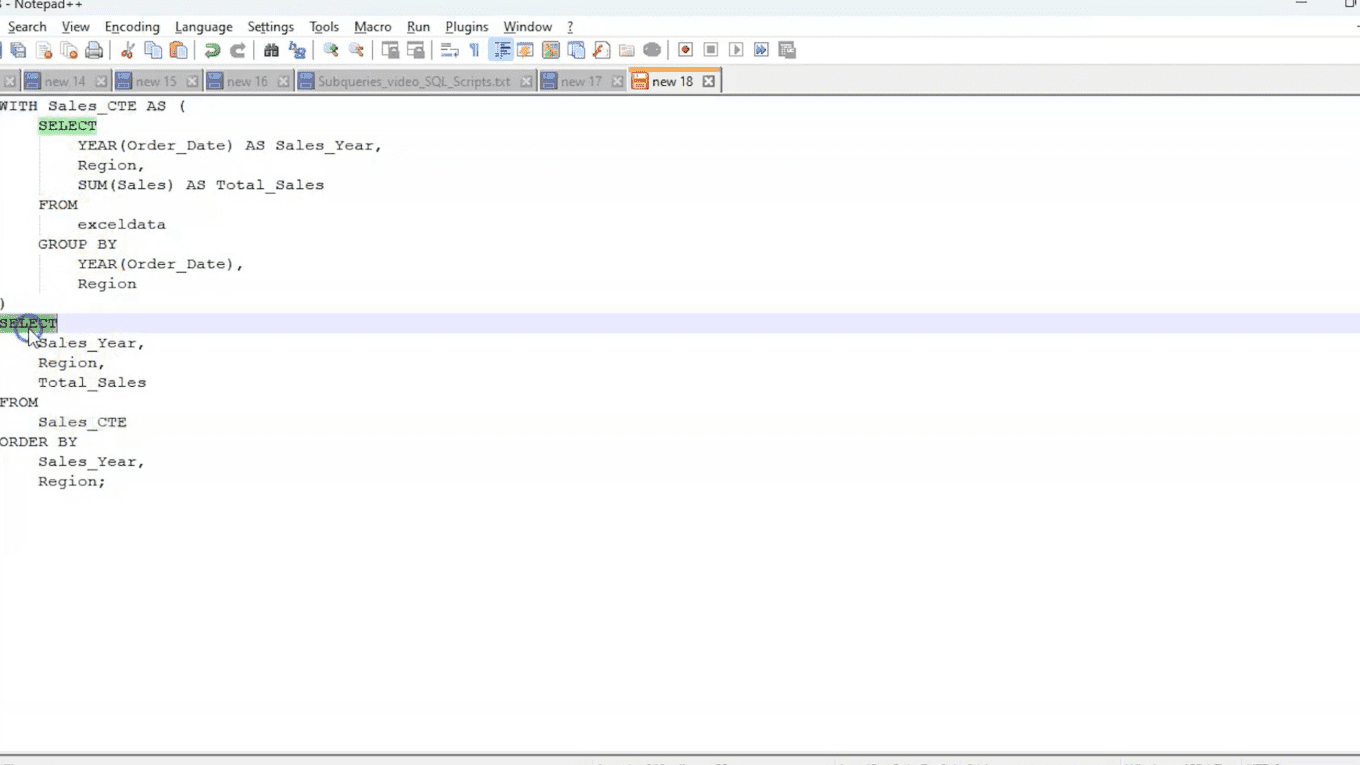Understanding SQL CTE: Common Table Expressions Explained 📊
Common Table Expressions are a very helpful feature in SQL which can help in simplifying complicated queries. These are especially useful if complex data manipulation involves the use of numerous tables and other CTEs. In this blog, we will define CTEs: what they are, how they function, and how they are better than ordinary sub queries. And, examples will also be provided for better understanding. Let’s get started on that!
What is a CTE in SQL? 📝
Common Table Expressions may be defined as temporary datasets referring or being referred in SELECT, INSERT, UPDATE or DELETE instructions, but not existing in the database. With, the clause is placed at the beginning, CTE is called by a name and a SELECT that defines the inner content follows. This makes it easy to decompose more complex queries, in order to improve their readability and to avoid creating subqueries with return result sets within the same query.

CTEs assist in shortening code and reducing execution time since they can be called numerous times without writing the whole query. They prove most useful in situations where a user must do multiple actions on the same dataset or when one has to deal with recursive queries.
How to Define a CTE 📍
To create a common table expression (CTE), you start with the WORKING cliché and denote its CTE name followed by the query which generates the result. Here’s how their syntax looks like:
WITH cte_name AS (
SELECT column1, column2
FROM table_name
WHERE condition
)
SELECT *
FROM cte_name;In this example, cte_name acts as a temporary table that holds the result of the query. You can then use this CTE in subsequent queries to simplify your SQL code.
Benefits of Using CTEs 🌟
The following advantages are presented by the CTEs in comparison to nested sub queries:
- Klarheit: CTEs become handy when it comes to large queries that need to be straightforward.
- Wiederverwendbarkeit: A CTE can be referred to in many places within the same query, thus minimizing duplication.
- Zeitraum: The existence of the CTEs is only limited to the scope of the query.
Hierarchical queries: CTEs are suitable for recursive queries since they allow such constructs.
CTE vs Subquery: Which is Better? ⚖️
Take into account the scopes of usage of CTEs before opting any of those CTEs or sub queries.
- Subqueries: Best to be used for one time calculation or handling small data sets.
- CTEs: Most appropriate for cases where intermediate result needs to be referred to multiple times or where the comprehend ability is of more identity.
After all what really matters is how best would you argue the merits of the need and the need of the complexity of the query.
Practical Example of a CTE 💻
We can closely examine how to execute this in a SQL database with a practical example. We’ll leverage a CTE to find sales organized by year and region, using a dataset. First, we will create our CTE in order to get the year of sale and the sum of sales.

WITH sales_cte AS (
SELECT
YEAR(order_date) AS sales_year,
region,
SUM(sales) AS total_sales
FROM
orders
GROUP BY
YEAR(order_date), region
)
SELECT *
FROM sales_cte
ORDER BY sales_year, region;In this example, we create a CTE called sales_cte. It calculates total sales by year for each region. We select data from the previous CTE and sort it by year and region.
Debugging CTE Queries 🛠️
As in all situations, using CTEs does not mean that one will face no problems that will need debugging. Here is an example of a common situation.
Let’s say that your query is producing results that are not as expected. A contrived thinking might lead you to understand that it is time to check some constraints, say the type of the columns used in the operations. For example, you might store the maildate as a string and then need to convert it to a date for calculations.

WITH sales_cte AS (
SELECT
CAST(order_date AS DATE) AS order_date,
SUM(sales) AS total_sales
FROM
orders
WHERE
order_date IS NOT NULL
GROUP BY
CAST(order_date AS DATE)
)
SELECT *
FROM sales_cte
ORDER BY order_date;In this example, we properly cast the order_date to a DATE type to avoid discrepancies in our results.
Conclusion: Mastering CTEs in SQL 🎓
To conclude, Common Table Expressions are beneficial in terms of query writing for SQL developers. They improve on how the users manage multiple complex statements and how readable such statements are.
As you progress in learning SQL, it would be a good idea to utilize a CTE in your practice. They can help cut down quite a number of unnecessary tasks when it comes to data manipulation and enhance the joy of coding.
Ask questions or discuss CTEs and SQL topics in the comments. Good luck with your queries!
